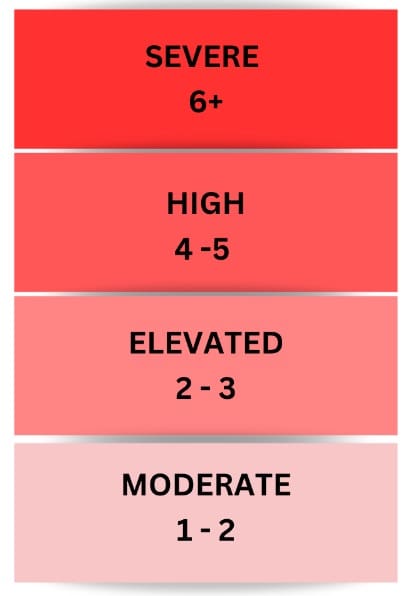
Termites can silently wreak havoc on your home, causing extensive damage before you notice their presence. In the United States, two main types of these destructive pests exist: subterranean termites that live underground and drywood termites that make their home directly in wooden structures.
Early detection and proper treatment are crucial to preventing costly repairs and structural damage. While DIY solutions might seem tempting, understanding the specific termite species and their behavior patterns is essential for effective treatment. Whether you're dealing with moisture-loving subterranean termites that build mud tubes or drywood termites that nest inside wooden structures, each type requires a distinct approach to elimination and prevention.
Understanding Termite Infestations
Different termite species require specific identification and treatment approaches to prevent extensive structural damage.
Types of Common Household Termites
Three primary termite species infest residential properties in the United States:
- Subterranean Termites build underground colonies and create mud tubes to access wood structures
- Dampwood Termites target moisture-rich wooden materials in contact with damp soil
- Drywood Termites inhabit coastal regions and infest dry wood without requiring soil contact
| Termite Type | Size | Preferred Environment | Geographic Location |
|---|---|---|---|
| Subterranean | 1/4 inch | Underground colonies | Throughout US |
| Dampwood | 1/2 inch | Moist wood areas | Coastal regions |
| Drywood | 3/8 inch | Low-moisture wood | Southern states |
Early Warning Signs to Watch For
Identify termite activity through these physical indicators:
- Hollow-sounding wood reveals when pressing a screwdriver into affected areas yields soft resistance
- Mud tubes measuring pencil-width appear on foundations or walls, indicating subterranean termite presence
- Visible damage in attics fuse boxes joints and structural cracks
- Swarmers with wings ranging from white to dark brown measuring 1/4 to 1/2 inch long
- Straight antennae distinguish termites from carpenter ants
- Drywood termite droppings appear as small pellets near infested wood
Regular inspection of these warning signs in high-risk areas like attics basements and wooden structures enables early detection.
Essential Tools and Materials
Professional termite treatment requires specific tools for accurate detection and effective elimination of infestations.
Inspection Equipment
- Termatrac Device: A non-invasive inspection tool that combines thermal sensing radar moisture detection and termite tracking capabilities to identify active infestations without damaging structures
- Thermal Imaging Camera: Advanced equipment that detects temperature variations on surfaces revealing potential moisture spots and termite activity through heat signatures
- Moisture Meter: Digital device measuring wood moisture content to identify conditions conducive to termite activity
- Inspection Probe: Sturdy metal tool for testing wood soundness by tapping suspected areas
- Bright Flashlight: LED inspection light with minimum 1000 lumens for examining dark spaces cracks and crevices
- Liquid Termiticides: Professional-grade chemical barriers containing fipronil imidacloprid or bifenthrin for soil treatment
- Bait Systems: Monitored stations containing cellulose-based bait with active ingredients like hexaflumuron or noviflumuron
- Foam Applications: Specialized expanding foam treatments for void spaces and hard-to-reach areas
- Wood Treatment Solutions: Borate-based products for direct wood application providing long-term protection
- Granular Products: Targeted treatments for specific areas around foundation perimeters and entry points
| Tool Type | Detection Range | Application Area |
|---|---|---|
| Termatrac | Up to 40mm depth | Interior/Exterior |
| Thermal Camera | Surface level | All structures |
| Moisture Meter | Up to 30mm depth | Wood materials |
Initial Assessment and Inspection
A thorough inspection forms the foundation of effective termite treatment and prevention. Professional inspectors use specialized tools and techniques to detect early signs of termite activity.
Where to Look for Termite Activity
Examine these key areas for signs of termite presence:
- Attic spaces: Check wooden beams joints cracks and corners for termite wings or droppings
- Foundation perimeter: Look for pencil-width mud tubes along the exterior walls
- Crawl spaces: Inspect wooden supports and floor joists for damage or hollow sounds
- Window frames: Search for sawdust accumulation and frass along sills
- Basement areas: Examine wooden structures for moisture damage or musty odors
- Door frames: Test wood firmness with a screwdriver to detect soft spots
- Fuse box surroundings: Look for evidence of termite tunnels or damage
- Wall voids: Listen for hollow sounds when tapping wooden surfaces
- Photograph evidence: Take clear pictures of:
- Mud tubes on foundations
- Damaged wood surfaces
- Termite wings or droppings
- Visible termite swarmers
- Mark locations: Use a floor plan to indicate:
- Areas of active infestation
- Spots with visible damage
- Moisture problem zones
- Entry points
- Measure extent: Document:
- Size of damaged areas
- Length of mud tubes
- Depth of wood damage
- Date findings: Record when you discover:
- New damage
- Fresh mud tubes
- Termite swarms
- Changes in wood condition
DIY Treatment Methods (Less Effective than Pro Services)
DIY termite control methods serve as temporary solutions for minor infestations. These methods demonstrate varying levels of effectiveness depending on the termite species and infestation severity.
Boric Acid Applications
Boric acid creates a toxic barrier against termites through a simple application process:
- Mix sodium borate with water to create a sprayable solution
- Apply the mixture directly to infested wooden areas
- Spray the solution around the perimeter of gardens and lawns
- Treat exposed wood surfaces with a boric acid powder coating
Orange Oil Treatments
Orange oil contains d-limonene, a natural compound toxic to termites:
- Extract d-limonene from orange peels or purchase concentrated orange oil
- Apply directly to visible termite galleries and infested wood
- Focus applications on drywood termite colonies
- Reapply every 2-3 weeks until termite activity ceases
- Place wet cardboard traps near infested areas to attract termites
- Create vinegar-lime solution sprays for contact killing
- Remove wood-to-ground contact points around structures
- Maintain proper drainage to reduce moisture levels
- Store firewood at least 20 feet away from buildings
| Treatment Method | Active Ingredient | Application Frequency | Best For |
|---|---|---|---|
| Boric Acid | Sodium Borate | Every 3-6 months | Prevention & Minor Infestations |
| Orange Oil | D-limonene | Every 2-3 weeks | Drywood Termites |
| Natural Traps | Moisture/Cellulose | Weekly replacement | Monitoring & Detection |
Romex Pest Control Professional Treatment Options
Chemical/Liquid Treatments
Chemical treatments create an underground barrier that prevents termite entry and eliminates existing colonies. The application process involves:
- Perimeter Treatment: The soil around your foundation receives termiticide through a series of drill holes and trenches spaced 12 inches apart
- Penetrating Protection: The liquid termiticide soaks into the soil creating a continuous protective zone that termites cannot detect
- Transfer Effect: Termites crossing the treated area absorb the chemical compound and spread it throughout their colony
- Long-Term Barrier: The treatment remains active in the soil for 5-10 years depending on environmental conditions
Bait Systems
Bait systems utilize termites' social behavior to eliminate entire colonies systematically:
- Strategic Placement: Bait stations positioned every 10-15 feet around the structure's perimeter
- Targeted Attraction: Stations contain cellulose-based materials treated with growth inhibitors
- Colony Elimination: Worker termites share the bait with nestmates disrupting the colony's growth cycle
- Continuous Monitoring: Regular inspection and bait replacement ensures ongoing protection
- Complete Structure Treatment: The entire building requires sealing with gas-tight tarps
- 24-72 Hour Process: The structure remains uninhabitable during treatment and ventilation
- Limited Residual Protection: Fumigation kills existing termites but provides no long-term barrier
- Environmental Concerns: The process involves using strong chemicals requiring strict safety protocols
| Treatment Method | Duration of Protection | Re-inspection Schedule | Initial Treatment Time |
|---|---|---|---|
| Liquid Barrier | 5-10 years | Annual | 4-8 hours |
| Bait System | Continuous | Quarterly | 2-3 hours |
| Fumigation | None | Semi-annual | 2-3 days |
Prevention Strategies
Implementing proactive prevention measures creates a robust defense against termite infestations in your property. Focus on these three critical areas to maintain effective termite prevention.
Moisture Control
- Install proper drainage systems to direct water away from your foundation
- Maintain gutters free of debris to prevent water accumulation
- Fix leaking pipes water fixtures within 24 hours
- Keep soil grades sloped away from the foundation at a 5-inch drop per 10 feet
- Ensure crawl spaces maintain 18 inches of clearance with proper ventilation
- Position sprinklers at least 12 inches from the foundation walls
Wood Protection
- Apply borate-based treatments to exposed wooden surfaces
- Use pressure-treated lumber for ground-contact applications
- Store firewood at least 20 feet away from structures
- Remove dead tree stumps roots within 50 feet of buildings
- Install a 3-inch concrete barrier between wooden structures the ground
- Select naturally resistant woods like redwood cedar cypress for outdoor structures
- Inspect foundation walls baseboards quarterly for mud tubes
- Check wooden structures monthly during spring summer
- Examine door frames window sills for signs of damage
- Monitor moisture meters in crawl spaces basements
- Document inspection findings with dated photographs
- Schedule professional inspections annually
- Look for sawdust-like droppings around wooden surfaces
- Test wood integrity by tapping for hollow sounds
Troubleshooting Common Issues
Understanding how to address recurring termite problems and recognize when professional intervention becomes necessary helps prevent extensive structural damage.
Dealing With Reinfestation
Termite reinfestations require immediate attention to identify and address the root causes:
- Inspect barrier integrity by checking for gaps in chemical treatments or damaged bait stations around the perimeter
- Examine moisture sources including leaky pipes plumbing fixtures drainage systems that attract termites
- Remove cellulose materials such as mulch wood debris cardboard within 18 inches of the foundation
- Seal entry points by caulking gaps around utility lines foundation cracks window frames door frames
- Monitor bait stations every 30-45 days to ensure continuous protection against new colonies
- Document infestation patterns using floor plans photos to identify recurring problem areas
- Continued wood damage despite applying boric acid treatments or orange oil applications
- Active mud tubes reappearing within 14 days after removal
- Multiple swarmers emerging from different areas of the structure
- Spreading infestation moving beyond the initial treatment zones
- Failed bait stations showing no termite activity or bait consumption
- Persistent droppings accumulating after cleaning treated areas
| Treatment Method | Time Before Results | Signs of Failure |
|---|---|---|
| Liquid Barriers | 2-4 weeks | New mud tubes |
| Bait Systems | 3-6 months | No bait consumption |
| Wood Treatments | 1-2 weeks | Continued damage |
When to Call Romex Pest Control for Professional Help
Professional pest control services offer specialized expertise and advanced treatment methods for effective termite elimination.
Signs of Severe Infestation
Severe termite infestations display distinct warning signs that indicate immediate professional intervention:
- Visible Structural Damage: Hollow-sounding wood structures sagging floors or ceilings buckled walls
- Extensive Mud Tubes: Multiple mud tubes measuring 1/4 to 1 inch wide along foundation walls baseboards or crawl spaces
- Large Swarms: Groups of flying termites emerging from walls floors or outdoor soil
- Accumulated Frass: Substantial piles of termite droppings resembling sawdust near wooden structures
- Musty Odors: Persistent damp earthy smells throughout living spaces
- Multiple Entry Points: Visible holes cracks or tunnels in wooden surfaces
- Paint Issues: Bubbling peeling or uneven paint surfaces on walls or wooden structures
- Licensing: Valid state pest control operator license with specific termite control certification
- Experience: Minimum 5 years of documented termite control experience
- Inspection Methods: Use of advanced detection tools including:
- Thermal imaging cameras
- Moisture meters
- Inspection probes
- Treatment Options: Access to multiple treatment methods including:
- Liquid termiticides
- Bait systems
- Foam applications
- Documentation: Detailed inspection reports treatment plans and warranty information
- Service Schedule: Regular follow-up inspections every 1-3 years
- Insurance Coverage: Active liability insurance and worker's compensation coverage
Long-Term Management Plan
Protecting your home from termites requires ongoing vigilance and a comprehensive management strategy. By implementing preventive measures monitoring for early warning signs and maintaining regular professional inspections you'll significantly reduce the risk of severe infestations.
Remember that successful termite control isn't a one-time solution but rather a long-term commitment. Whether you choose DIY methods professional treatments or a combination of both it's essential to stay proactive. Keep detailed records of inspections treatments and any signs of activity.
Your home is likely your biggest investment and protecting it from termite damage is crucial for maintaining its value and structural integrity. Don't wait until you see obvious signs of damage - take action now to create an effective defense against these destructive pests.
Frequently Asked Questions
What are the main types of termites found in the US?
There are two primary types of termites in the United States: subterranean termites, which live underground and build mud tubes, and drywood termites, which live directly in wooden structures. Each type requires different treatment approaches due to their distinct habitats and behaviors.
How can I identify a termite infestation?
Look for these key signs: hollow-sounding wood when tapped, mud tubes on foundation walls, visible wood damage, swarmers (flying termites) especially in spring, and termite droppings (like sawdust or coffee grounds). Regular inspections of attics and basements can help catch infestations early.
Are DIY termite treatments effective?
DIY treatments can be effective for minor infestations but have limited success with severe cases. Methods like boric acid applications and orange oil treatments can work temporarily, but professional treatment is recommended for comprehensive elimination, especially for established colonies.
How long do professional termite treatments last?
Professional chemical treatments typically last 5-10 years for liquid barriers. Bait systems require ongoing monitoring but provide continuous protection. Fumigation offers immediate elimination but doesn't prevent future infestations. Regular inspections are necessary regardless of treatment type.
What areas of my home should I inspect regularly for termites?
Focus on checking attics, foundations, crawl spaces, window frames, basements, door frames, and areas around the fuse box. Pay special attention to any wood in contact with soil and areas with high moisture levels. Monthly inspections of these areas are recommended.
How can I prevent termite infestations?
Implement moisture control by maintaining proper drainage and gutters, use pressure-treated lumber for construction, apply borate-based treatments to wood, eliminate wood-to-ground contact, and ensure proper ventilation in crawl spaces. Regular professional inspections are also crucial for prevention.
When should I call a professional pest control service?
Contact professionals immediately if you notice structural damage, extensive mud tubes, large swarms of flying termites, accumulated frass (termite droppings), multiple entry points, or paint issues. These signs indicate a severe infestation requiring expert intervention.
Does homeowners insurance cover termite damage?
Most homeowners insurance policies don't cover termite damage as it's considered preventable through routine maintenance. Regular inspections and preventive treatments are essential since repairs for termite damage must typically be paid out of pocket.
We hope you enjoy these informational articles. If you'd like to learn more about our eco-friendly pest control services, call (844) 955-2447.
Read More
Your Path to a Pest-Free Home or Business
Romex Pest Control
We are committed to protecting you, your children, and your pets with our eco-friendly, child-friendly, and pet-friendly guaranteed pest control solutions.
Romex Pest Control is fully insured and licensed in Texas, Oklahoma, Louisiana, and Mississippi.
Service Areas:
Hours
M-F 8 am–5 pm
Sat 8 am–2 pm
Sun Closed
Established 2016 © Copyright 2025 Romex Pest Control










